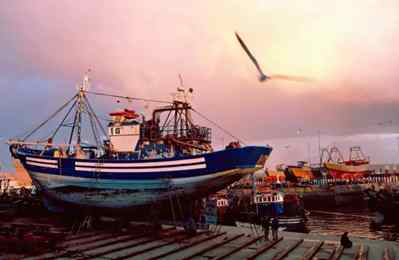Tankers: Aframax market may see weakness in 2017; clean LR2s may often trade dirty – BRS

Weak growth in demand for Aframax tankers is likely to persist this year amid a relatively strong expansion of fleet for the next two years, Barry Rogliano Salles, one of the world’s oldest shipping brokerages, said.
“The Aframax rates are likely to remain under downward pressure this year but should recover towards end of [this year] and in 2018 due to more scrappings and [recovery] in demand,” said Claire Ye, a BRS tanker broker, on Tuesday at Enmore Biz’s 7th Oil Tanker Shipping Summit in Beijing, China.
Following four years of low growth of less than 1%, the Aframax fleet grew by 2.4% last year and is projected to grow at 3.7% this year, according to Ye.
The Long Range II fleet, the Aframax vessel’s clean counterpart with epoxy-coated tankers, is also expanding rapidly, adding optional tonnage to an already oversupplied market, she said.
Nevertheless, 65% of the newbuilding Aframaxes and LR2s delivered last year, are mostly trading in the West, she added.
Another interesting aspect of the Aframax segment is that the fleet is “getting older extremely rapidly,” Ye said. The share of Aframaxes that are 15 years old or more in the total fleet is projected at 25% this year, 34% next year and 39% in 2019.
Scheduled deliveries of Aframaxes this year, at 34 units is around 5% of the existing fleet. A similar number of 31 is scheduled to be delivered next year, she added.
The order book of Aframaxes, or non-epoxy coated tankers, is not large enough to offset the rapidly aging fleet, she noted.
The trend of LR2s turning dirty could become even more common in the near future, Ye said. The average age of LR2s is around 7.1 years compared with that of almost 11 years for non-epoxy coated Aframax tankers.
“The LR2 and Aframax rates are likely to see an increasing convergence because of the growing use of the clean-to-dirty optionality,” she said.
The epoxy-coated tankers can be used as both clean and dirty, though returning to the clean products market after carrying cargoes of crude and fuel oil entails costs for making the ships suitable for doing so, in line with stringent specifications.
Increasingly, epoxy-coated tankers are being built for use in both the clean and dirty segments.
The LR2s account for 32% of the LR2-Aframax fleet but they have a 44% share in the LR2-Aframax orderbook, Ye said.
The aging fleet along with the weaker freight rates and new regulations on ballast water management that will be implemented from September may give a fillip to the scrapping activity, she said.
On the trading pattern for Aframaxes last year, she said more than half of the fixtures in the East were on the Indonesia to Far East routes, while 20% were out of Kozmino.
Within the Indonesia to Far East sector, 36% of the fixtures were to China, followed by 20% to Singapore and Malaysia, 13% to Thailand, 11% to India and 7% to Korea. Around 70% of the fixtures out of Kozmino were for delivery into China.
The recent cut in crude production by OPEC and non-OPEC countries will only have a short-term impact on the shipping trade. While the volumes shipped by Saudi Arabia and Russia declines, it will be offset by higher flows from other countries, she said.
Source: Platts
HEADLINES
- Do shipping markets want Biden or Trump for the win?
- All 18 crew safe after fire on Japanese-owned tanker off Singapore
- Singapore launching $44m co-investment initiative for maritime tech start-ups
- Cosco debuts Global Shipping Industry Chain Cooperation Initiative
- US warns of more shipping sanctions
- China continues seaport consolidation as Dalian offer goes unconditional